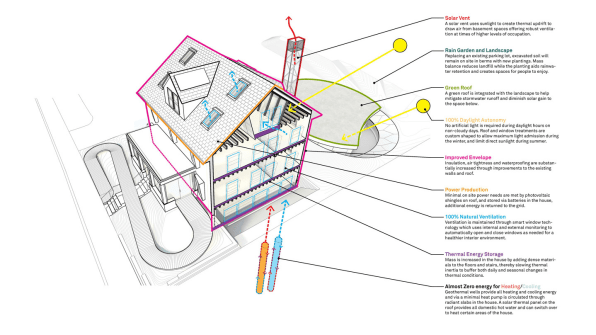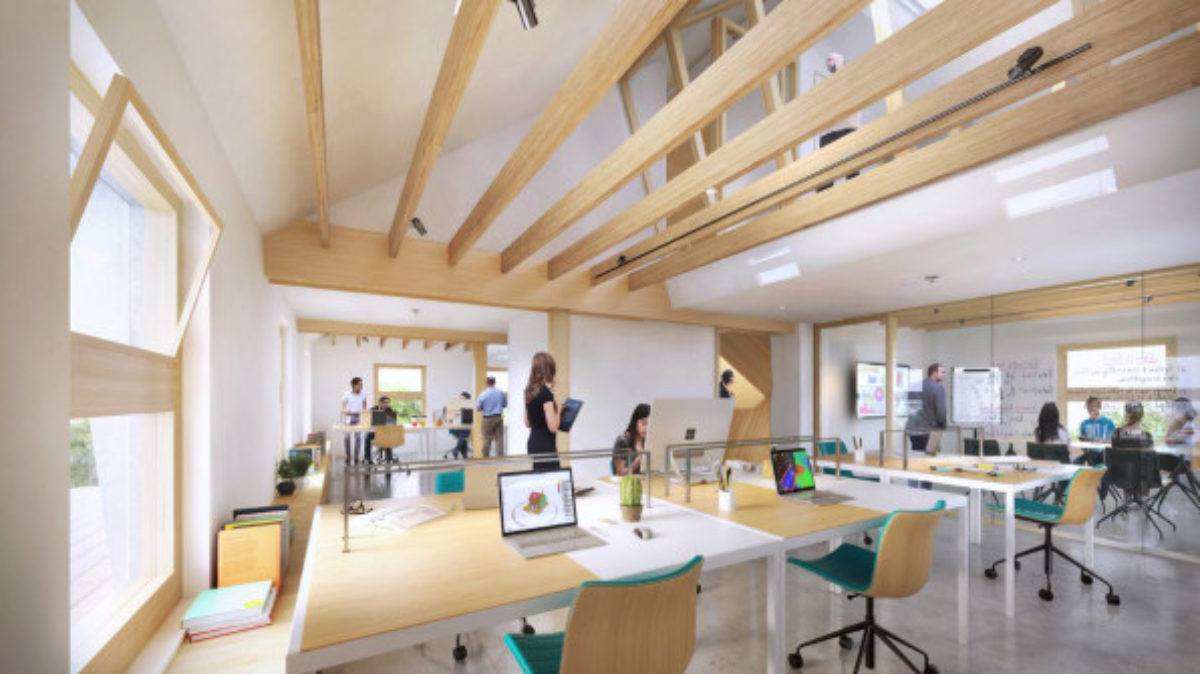The Harvard Center for Green Buildings and Cities (CGBC) has revealed its centerpiece initiative: an ambitious retrofit of its Cambridge headquarters, a pre-1940s, stick-built house into a prototype of ultra-efficiency. Dubbed the “HouseZero” project, this initiative represents several years of intensive research and a comprehensive redesign, developed with Snøhetta. Read FastCompany‘s feature on the HouseZero project.
As the CGBC notes, the procedure and mission underlying HouseZero, while wide-ranging, will be accomplished using existing technology that homeowners can purchase now.
“Before now, this level of efficiency could only be achieved in new construction,” says Ali Malkawi, professor of architectural technology at the GSD, founding director of the Harvard Center for Green Buildings and Cities, and the creator of the HouseZero project. “We want to demonstrate what’s possible, show how this can be replicated almost anywhere, and solve one of the world’s biggest energy problems — inefficient existing buildings.”
Ultimately, HouseZero will use near-zero energy, use no electric light during daytime, and produce zero carbon emissions, the CGBC says. HouseZero’s HVAC system will be replaced with thermal mass, and a ground source heat pump for extreme cold. A solar vent will instigate buoyancy-driven ventilation and triple-glazed windows will employ natural cross ventilation through a manual and automated system that monitors for temperature, humidity, and air quality.

All said, HouseZero’s interior will model a healthy environment with natural light and no off-gassing material, designed to be comfortable, durable, functional, and flexible. Rather than approaching the house as a “sealed box,” the building envelope and materials of HouseZero are designed to interact with the seasons and the exterior environment in a more natural way. Much like a layered approach to clothing, the house is meant to adjust itself seasonally, and even daily, to reach thermal comfort targets.
“All components of the building are sensored to generate data that will allow the building to adjust itself and fuel CGBC research focused on actual data and simulated environments,” said Professor Ali Malkawi.
HouseZero represents a significant milestone in the GSD’s broader mission of applying design research toward improving the built environment and the human condition.
“The HouseZero project represents precisely the kind of transformative impact through design that we strive to make at the GSD,” says Mohsen Mostafavi, Dean and Alexander and Victoria Wiley Professor of Design at the GSD. “With this test case – retrofitting a house in Cambridge into a new work space – the Center for Green Buildings and Cities directly engages the ways in which we can reimagine the future of many of our cities and their utilization of resources.”
To learn more about HouseZero, visit the CGBC’s news release, as well as HouseZero’s recent feature in FastCompany.
